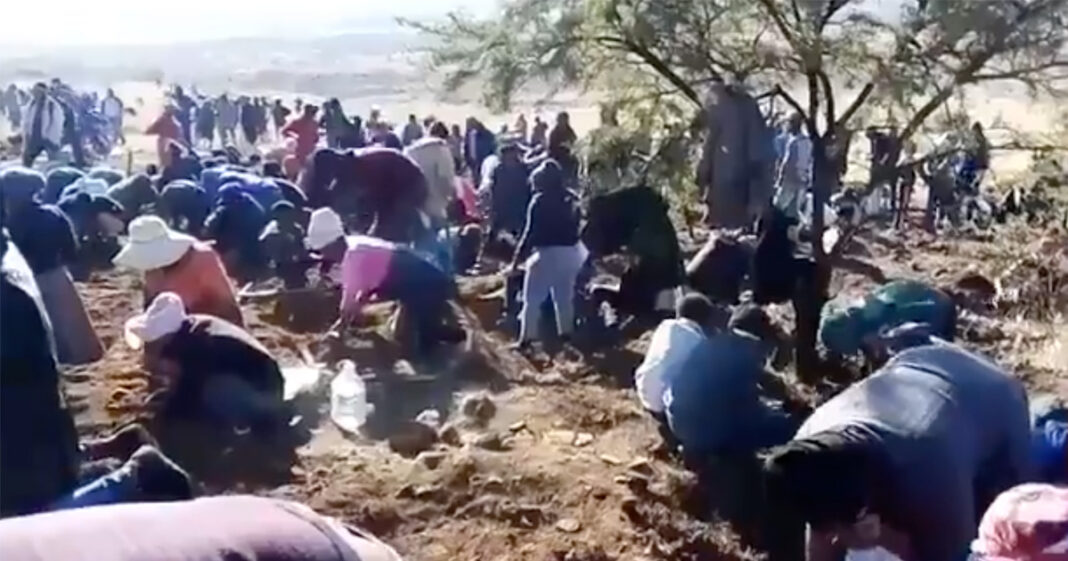

- DIAMOND RUSH SOUTH AFRICA DESPERATION TRIAL
- DIAMOND RUSH SOUTH AFRICA DESPERATION PROFESSIONAL
- DIAMOND RUSH SOUTH AFRICA DESPERATION SERIES
Today, 75 countries have joined the Kimberley Process and largely adhere to its extensive requirements. Since the late 1990s, the incidence of conflict diamonds in the pipeline fell from a high of 4% to less than 0.2%, according to the World Diamond Council, the body set up in 2000 to represent the industry in the then fledgling negotiations. Putting human rights explicitly on the agenda, then, becomes a near-impossible task, though civil society organisations have been buoyed in this rearguard action by companies that are decidedly more aligned with NGOs than they are with governments.ĭespite these failings, the regulatory effort can claim considerable success on a number of fronts.

As a member government, Zimbabwe could block its own suspension. Smillie traces the process’s fundamental design flaw to consensus decision-making, which lends legitimacy but also means any country can block or use procedure to delay action. “The fact that you have governments killing people, raping people, arresting people and forcing them to march hundreds of miles across bad roads … this is not the kind of thing NGOs want to be a part of or be seen in any way to support,” he says.
DIAMOND RUSH SOUTH AFRICA DESPERATION TRIAL
He likens widespread murders and cross-border diamond smuggling in Zimbabwe, Angola and Venezuela to the same kind of lawlessness now being exposed at the ongoing trial – featuring Naomi Campbell et al – of former Liberian president Charles Taylor in The Hague. When members fail to comply, it lacks the tools to take action, Smillie says. Its enforcement largely rests on the good faith of government participants to report suspicious trades.
DIAMOND RUSH SOUTH AFRICA DESPERATION PROFESSIONAL
Seven years after its launch, the Kimberley Process still does not have a secretariat, a professional staff, headquarters or any sort of independent funding. With more people and organisations threatening to follow, the very legitimacy and continued functioning of the Kimberley Process is at stake. They have played out since then amid a lurching monitoring scheme that has seen Kimberley participants bickering over whether to suspend or expel Zimbabwe.Īlready two founding fathers of the Kimberley Process – civil society member Ian Smillie and industry member Martin Rapaport – have walked away from the scheme in disgust. The findings – first presented in October 2008 by Global Witness – have emphasised the urgent need for reform of the Kimberley Process. This is contrary to the procedure’s most basic principle: that no rough diamonds may leave or enter a participating country without a government certificate. In 2008 a diamond rush at the mine resulted in a massacre of as many as 200 diamond diggers, allegedly by the Zimbabwean armed forces.Ĭivil society groups also documented massive volumes of Zimbabwean diamonds smuggled out through neighbouring Mozambique. This became a new regulatory scheme for a largely secretive and globally dispersed industry, and it was laid down, remarkably, in less than three years.Īlthough the trade in conflict diamonds has almost entirely stopped, the industry still finds itself linked to all manner of controversies – everything from strengthened arms-smuggling and money-laundering networks, to drug shipments and terrorist financing.īut perhaps none of these controversies has been more damaging than the effort to certify diamonds exported from Zimbabwe’s recently discovered Marange mine. Its chief strength – a then-unique tripartite system of relations between states, NGOs, and corporations – is largely credited with what followed.

The threat of boycott forced the diamond industry to take action through a remarkable negotiating forum that became known as the Kimberley Process.

Parallel efforts by the United Nations and several NGOs hoisted the issue onto the global agenda.
DIAMOND RUSH SOUTH AFRICA DESPERATION SERIES
The haltingly successful effort to regulate the diamond trade was launched in 2000 after a decade-long series of bloody civil wars in Angola, Sierra Leone and the Democratic Republic of Congo.įunded by so-called blood diamonds – diamonds mined in a war zone and sold to finance an insurgency, an invading army’s war efforts or a warlord’s activities – Africa’s diamond wars have taken four million lives. The Kimberley Process has succeeded in virtually eliminating blood diamonds, but the global gem trade remains far from cleanĮnding the trade in diamonds to finance rebel movements is the mission of the Kimberley Process.


 0 kommentar(er)
0 kommentar(er)
